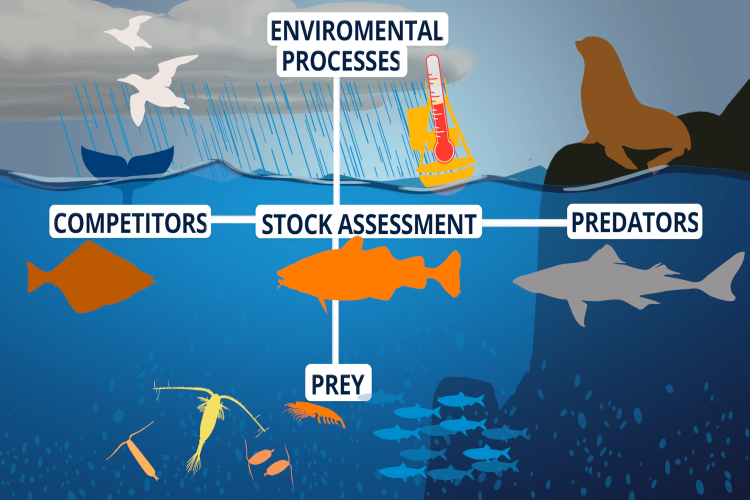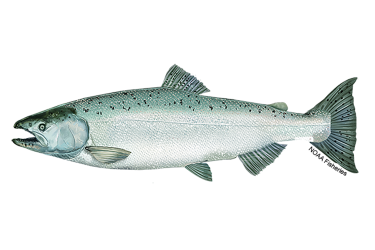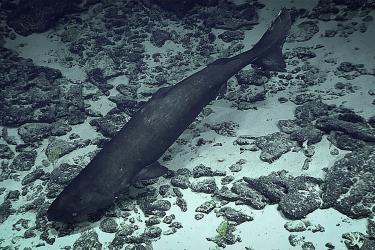More than 90 researchers and local community members contributed knowledge and information to help NOAA Fisheries scientists generate an ecosystem status report for the Gulf of Alaska ecosystem last year. This new video captures some of the high points of that report.
“We are excited to offer another way of sharing what we learned about ecosystem conditions in the Gulf of Alaska last year,” said Bridget Ferriss, Gulf of Alaska Ecosystem Status Report editor. “This video is a nice complement to our other communications products.”
For decades, scientists at the Alaska Fisheries Science Center have been pulling together data for numerous indicators of ecosystem health including water temperature, plankton abundance, and seabird reproductive success. NOAA Fisheries and other scientists from other organizations monitor these indicators for the four marine ecosystems that surround Alaska–the Aleutian Islands, the Bering Sea, the Gulf of Alaska, and the Arctic.
Every fall, the North Pacific Fishery Management Council sets catch limits for groundfish and crab in federal waters off Alaska for the upcoming fishing year. They base these decisions on scientific research and analysis including fish stock assessments, economic information on the commercial fishery, and these annual ecosystem assessments.
“Ecosystem assessments help us understand the context by explaining, among other things, how changes in the ecosystem might affect present and future abundance of commercially important fish and crab stocks,” said Ferriss.
For each of the Alaska Ecosystem Status Reports, a variety of indicators are evaluated annually. All of this information helps fisheries managers to determine what steps to take to ensure sustainable fish and crab fisheries while preserving the health of the overall ecosystem.
Video Highlights
In 2020 the Gulf of Alaska marine environment returned to more average sea surface temperatures after heatwave conditions in 2019. This resulted in increased food availability for groundfish (forage fish and zooplankton). Some species are still being impacted by marine heatwave conditions from previous years.
The video is part of a suite of communications products that are developed to help summarize the key findings of the comprehensive ecosystem status reports. Other products include “Ecosystem Briefs,” story maps, and collaborative products with partners like the Bering Sea Science Report.






